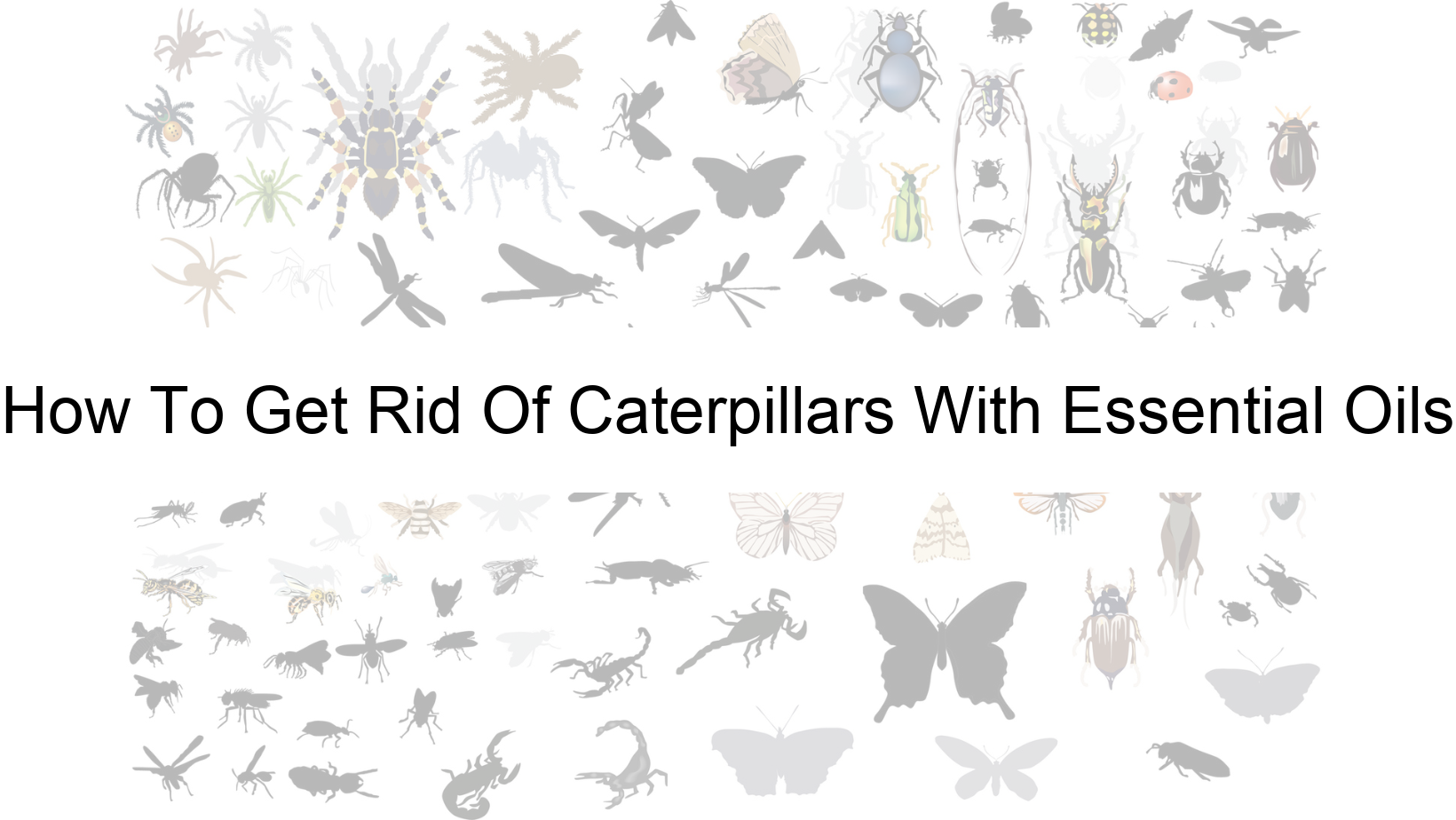According to the latest research, an outbreak of caterpillars can cause serious damage to lawns, gardens and crops, leading to a staggering loss of over $50 billion each year. This surprising statistic only underlines the importance of finding effective methods to get rid of these destructive creatures once and for all.
If dwindling leaves, holes in your plants and eaten fruits and vegetables have been causing you trouble, then it’s highly likely that caterpillars are the culprits behind these problems. But what’s the solution? Chemical pesticides can be expensive, harmful to the environment, and not to mention ineffective against some caterpillar species. However, there is an all-natural and highly effective method that’s been gaining popularity amongst gardeners- Essential oils.
Believe it or not, certain essential oils possess potent anti-caterpillar properties that help combat these pesky critters more naturally and effectively than some of the commercial pesticides out there. So, without further ado, let’s dive into the world of essential oils and unveil the secrets of getting rid of caterpillars naturally- the green way!
This Is How To Get Rid Of Caterpillars
Essential oils like peppermint, neem, and thyme repel and kill caterpillars. Mix few drops of oil in water, spray on affected area. Reapply every few days until caterpillars disappear. Alternatively, apply diluted oil directly to plants.
Effective Essential Oils For Repelling Caterpillars
Caterpillars consume huge amounts of crops every year, and have a wondrous ability to bring down entire fields if left unchecked. Although chemical pesticides are an option, many people are beginning to turn to natural alternatives such as essential oils to rid their fields and gardens of caterpillars. The good news is that there are several essential oils available that have been shown through scientific evidence to be effective repellents for caterpillars.
One of the highly effective essential oils that repel caterpillars is Neem oil. Neem oil is derived from the neem tree, and has been widely used in traditional medicines due to its potent insecticide properties, which are effective against various insects, including caterpillars. Additionally, it has a number of systemic effects as well, reinforcing the plant’s Immune system and stimulating growth.
Another effective essential oil for deterring caterpillars is Peppermint oil. The power of peppermint oil lies in its strong scent, which is highly unpleasant to most insects. When Peppermint oil is sprayed on crops, it can repel caterpillars and deter them from laying eggs on the leaves or foliage. This oil is also highly rated for use in organic farm practices as it is non-toxic to humans and can be safely applied directly to fruits and vegetables.
Finally, Eucalyptus oil is another great alternative that has shown promising results in repelling caterpillars. Eucalyptus oil contains cineole, eucalyptol, and linalool compounds that have been shown to be highly effective in combating the crawling insects, which would normally ravage crops. It works as both a repellent and a deterrent by placing a barrier such that caterpillars will not come within close enough proximity to the agricultural products they would destroy.
In conclusion, essential oils provide a natural and organic option for repelling caterpillars. Neem, peppermint, and eucalyptus oils have proven to be highly effective in repelling caterpillars through different methods. These methods include their strong scent and the ability to enhance antioxidants’ production in plants – they can help repel caterpillars while also encouraging healthier growth. These oils have the added advantage of being safe for human consumption, environmentally friendly and are affordable options for farmers or amateur gardeners struggling with appeasing ravenous enemies in their crops keeping them and their produce safe.
How To Use Essential Oils Effectively
Essential oils have gained attention when it comes to insect repellent, and caterpillars are no exception. Some popular oils found to repel caterpillars include peppermint, clove, thyme, and citrus oil. There are different methods for deploying these essential oils as a repellent. One way is through applying it directly to plants or soil surrounding the garden. Another way is by creating a blend of oils and spraying it onto plant leaves or creating a barrier around your garden beds.
While essential oils can be a safe method for repelling caterpillars, it is important to note that some oils can be harmful to humans and pets if ingested or applied topically. Applying essential oils to skin or ingestion can cause symptoms such as respiratory issues or skin irritation. Topically applying oils on pets can lead to toxicity.
To safely use essential oils as a repellent for your garden, it is recommended to create a diluted mixture of oils with water or a carrier oil. It is also important to research and follow proper dilution ratios and safety precautions. Avoid applying the repellent during windy days or heavy rain to avoid risk to your safety and effectiveness.
In conclusion, using essential oils as a repellent for caterpillars can be an effective, natural alternative to chemical insecticides. However, pre-cautions need to be taken before using essential oils, especially while considering the safety of pets and humans. Appropriate safety gear should be used while applying, and the usage needs to adhere to safety guidelines.
What You Need To Know About Caterpillars
Caterpillars are mostly harmless, but few species are dangerous to humans and animals. Though they might seem harmless and adorable, some types of caterpillars can pose a real threat to pets, homes, gardens, and people. Caterpillars generally don’t aggressively seek humans, instead they remain on trees, plants, or other surfaces, which present a danger to those who get too close without taking proper precautions.
The Exposure to dangerous caterpillars’ hairs, spines, or fluids can cause irritation, allergic reactions, and even serious health problems. Some of these reactions can be potentially fatal if left untreated. The dangers posed by such caterpillars are more pronounced in certain regions where they frequently come into contact with humans or pets. Furthermore, Some of these critters are known to nest in large groups or leave toxic feces along public pathways, making trace exposure a common possibility.
Apart from posing a threat to people’s health, outdoor caterpillars are known to wreak havoc on household plants and flowers. Caterpillars use their sharp mouth and other body parts for feeding on and eating the foliage of the surrounding trees, shrubs, and ornamental plants. Their excessive eating can weaken trees and damage vegetation. It is important to take preventative measures to protect gardens with the use of treatments, natural deterrents, and possible removal of infecting specimens.
In addition to causing issues for homes and gardens, caterpillars’ furry bodies and walking mechanisms have been known to cause damage to pets. Cats or dogs might accidentally eat common household vegetation with such critters hiding in them, bee responsible for outbreaks of vomiting, loss of appetite or strong discomfort. Whether playing close to the trees or exploring outside, it is essential to supervise pets in areas known for higher caterpillar densities. In summary, caterpillars’ harmful effects impacting human health, plants, and pets paint the picture of the importance of caution and appropriate cleaning up tactics.
Sources:
1. Gharbi, K., & Tay, J. (2022). Fumigant Toxicity of Essential Oils against Frankliniella occidentalis and F. insularis (Thysanoptera: Thripidae) as Affected by Polymer Release and Adjuvants. Insects, 13(6), 493. https://doi.org/10.3390/insects13060493
2. Publication : USDA ARS. (n.d.-b). https://www.ars.usda.gov/research/publications/publication/?seqNo115=227048
3. Kumar, P., Mishra, S., Kumar, A., & Sharma, A. (2016). Antifungal efficacy of plant essential oils against stored grain fungi of Fusarium spp. Journal of Food Science and Technology, 53(10), 3725–3734. https://doi.org/10.1007/s13197-016-2347-0

